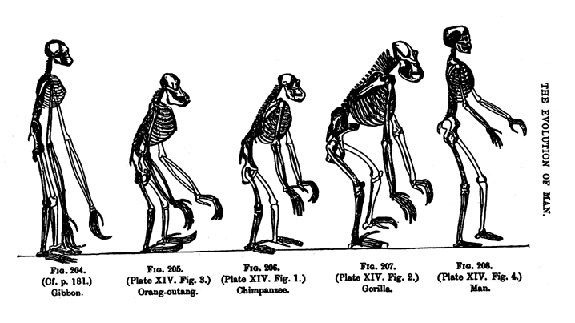The following sketches succinctly describe the lives of our direct Huxley ancestors and are intended to inform additional research. These sketches are based primarily on existing family history and biographies, such as The Huxley Family, but additional sources are cited as appropriate.
Thomas Huxley and Margaret James
Little is known about Thomas and Margaret Huxley, our fifth-great grandparents. We know their names because they are listed on their children’s baptismal records, but their specific origins and occupations are murky. The living family knows Thomas as a butcher. Leonard Huxley (1860-1933) produced a short genealogy appearing on pages 15-17 of The Genealogical Descent of the Huxley Family in America, calling Thomas a “victualler” – possibly meaning he was an innkeeper or supplier to the military. The British were engaged in a series of Coalitions against France during that time, and Thomas Huxley might have been involved as a supplier.
Most genealogists offer birth and death dates of 1750 and 1796 for Thomas, based on Leonard Huxley’s genealogy. A Thomas Huxley, son of John and Mary Huxley, was baptized in Meriden, Warwickshire, on 11 April 1748, and some researchers speculate that he is our Thomas based on appropriate age and geographic proximity to his children’s known area of residence, but this requires more research.
The Huxleys have been called a Cheshire family, and family history dictates that their earliest recorded origins are with the manor of Hodeslia, southeast of Chester (south of Liverpool). The manor area is now the hamlet of Huxley, where the Higher Huxley Hall and Lower Huxley Hall remain. The family eventually populated nearby villages such as Eccleston.
Thomas lived in Lichfield – far to the southeast of Chester – for some time, according to family history, and eventually moved from Lichfield to Coventry. The family’s easterly move – toward London – complies with the centuries-long trend of England’s move toward the burgeoning economy of the metropolis.
Thomas and Margaret had at least the following children, based on baptismal and burial records of St. Michael’s Church, Coventry, listing each child’s parents:
- Elizabeth (Huxley) Townsend, 1774-1833. Married (FNU) Townsend according to speculative FH. An Elizabeth Townsend was buried at St. Michael, Coventry, in 1833.
- William Huxley, 1776-1806. He was the “victualler of Divesport,” according to Leonard Huxley’s genealogy. His 1806 probate record confirms Leonard’s information, naming William as a victualler in Liverpool. William likely took on his father’s business. “Divesport” could refer to the town of Dives, France, which the British Navy might have used as a supply hub during the Coalitions against France.
- Thomas Huxley, 1779-1814. Married Catherine Holden on 28 July 1803 at St. James, Piccadilly. Their children were Thomas, Mary and John.
- George Huxley, baptized 9 November 1780 at St. Michael, Coventry, Warwick; married Rachel Withers in 1810; died in 1855. George’s baptism and his parents’ names are recorded on film numbers 428986 and 428987 in England Select Births and Christenings, 1538-1975. George and Rachel are described on the 1851 census. George and Rachel are our direct ancestors.
- John Huxley, 1784-unknown. This information is based solely on Leonard Huxley’s genealogy and no confirming records have been found.
- Charles Huxley, 1789 (died in infancy). This information is based solely on Leonard Huxley’s genealogy and no confirming records have been found.
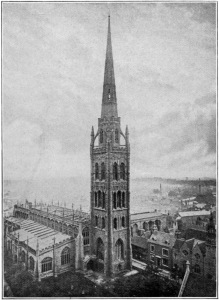
George Huxley and Rachel Withers
Our fourth great-grandfather George Huxley (1780-1855) grew up in Coventry, but would for some time live in Ealing on the western outskirts of London, where he served as the assistant master at Great Ealing School. Great Ealing School was sometimes compared to Eton for its instruction and the school was noteworthy for its sporting grounds.
An 1815 account of the school by John Quincy Adams – at the time the US’s representative to the UK, seeking an appropriate school for his sons – describes the rigorous schedule of education that George Huxley would have enforced:
“…by the rules of the school they could not come home the first Sunday after their entrance; nor the second until after the morning service at church; and to return the same evening. Afterwards, once a month they might come home on Saturday afternoon to return Sunday evening, and occasionally they might come on Thursday afternoons, their half holidays, to return to school by eight in the evening. We could come and see them there every morning if we pleased. The [headmaster] mentioned the necessity of adhering to the general rules, as one exception would make another necessary, and it then became difficult to draw the line of distinction.”
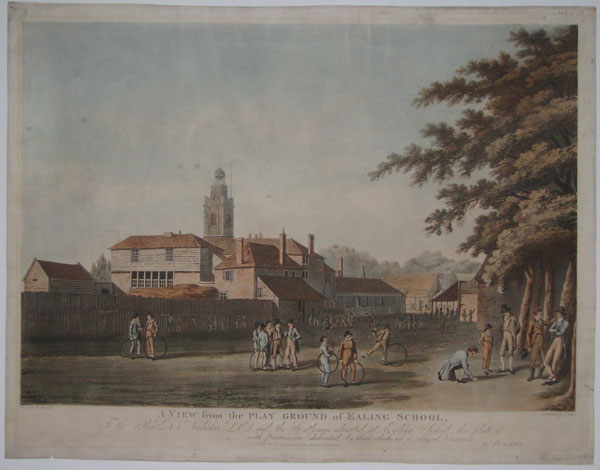
George married Rachel Withers (1786-1852) on 7 June 1810 at St. George, Bloomsbury. A few Knight family members witnessed the marriage and the couple would use Knight as a middle name for a son, suggesting that Rachel was born to the Knight family, and that Withers was Rachel’s last name by a first marriage. According to The Huxleys, George was “tall, dark, rather quick-tempered” and Rachel was a “slender, dark-haired, dark-eyed woman of great charm.”
George and Rachel had at least the following children:
- Elizabeth “Eliza” Huxley, 1819-1876; married John Godwin Salt (a.k.a. Scott), M.D., in 1839. Elizabeth and John had four children – Thomas, Flory, Jessie, and one other son. The family lived in Tennessee by 1847, and later in Alabama.
- William Thomas Huxley, 1819-1855
- James Edmund Huxley, M.D., 1821-1907
- George Knight Huxley, 1823-1864
- Ellen Huxley, 1824-1857; married (FNU) Cooke, M.D., in 1839.
- Charles Huxley (died in infancy). This information is based solely on Leonard Huxley’s genealogy and no confirming records have been found.
- Thomas Henry Huxley, born 4 May 1825; married Henrietta Anne Heathorn (1825-1915) on 21 July 1855; died at Eastbourne, London, on 29 June 1895. T.H. Huxley and a few of his brothers are listed together on an 1851 census. T.H. and Henrietta are our direct ancestors.
Thomas Henry Huxley and Henrietta Anne Heathorn
Our third great-grandfather Thomas Henry “T.H.” Huxley (1825-1895) was born in Ealing, on the western outskirts of London, while his father was the assistant master of the Great Ealing School. He attended the Great Ealing School for some time, and hated it. He matriculated into London University after a medical apprenticeship to his brother-in-law Dr. John Salt, and excelled in the study of medicine. With exceptional grades and commendations, in 1846 he applied and was accepted to the Royal Navy as a surgeon.
Through 1850, T.H. served as assistant surgeon aboard the H.M.S. Rattlesnake – an exploratory posting that would define his scientific and literary reputation. He assisted the naturalist John MacGillivray in describing, naming and cataloging previously unrecorded species from the area of Australia and New Guinea, earning him the same mystique of naturalists like Charles Darwin. His papers from the exploration, which he sent to the Royal Society, would popularize his scientific positions – especially his early perception of evolutionary origins of some species – and earned him a Fellowship by 1851. His strong reputation enabled him to take a professorship of natural history at the Royal School of Mines in 1854.
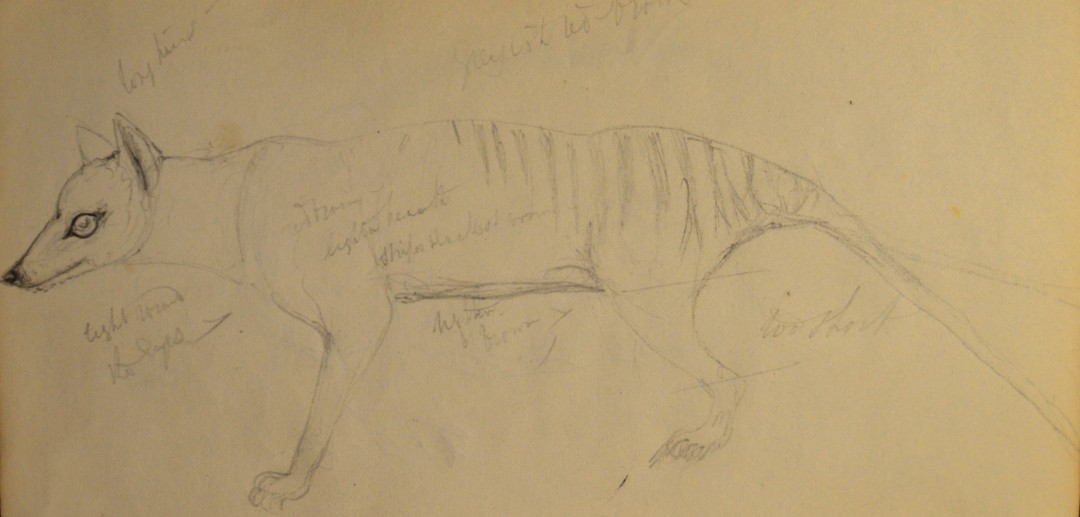
T.H. Huxley met Henrietta Heathorn (1825-1915) while he was exploring aboard the H.M.S. Rattlesnake, during some time off near Sydney, Australia. Henrietta’s family – her father Henry Heathorn and mother Sarah Richardson, and step-sister Oriana – had arrived there in 1843. The couple were engaged, then spent years apart. They finally married on 21 July 1855 at All Saints’ Church, Maida Vale, London. They had the following children:
- Noel Huxley, 1856-1860
- Jessie Oriana (Huxley) Waller, 1858-1927; married Fred Waller, architect to the Dean and Chapter.
- Marian Huxley, 1859-1887; married the Edwardian portaitist John Collier. She also was a painter of great skill.
- Rachel (Huxley) Eckersley, 1862-1934; married Alfred Eckersley, a civil engineer responsible for building a railroad to Gibraltar.
- Leonard Huxley, born 11 December 1860; first married (1) Julia Arnold in 1885, then married (2) Rosalind Bruce; died 2 May 1933. Leonard and Rosalind are our direct ancestors.
- Henrietta “Nettie” (Huxley) Roller, 1863-1940; married Harold Roller. Nettie was strong individualist – a singer and artist who traveled freely.
- Henry Huxley, 1865-1946; married Sophy Stobart.
- Ethel (Huxley) Collier, 1866-1941; married the artist John Collier after her sister Marian’s death. Ethel was an artist, as well as a subject of John Collier’s paintings.
The family lived at 14 Waverley Place, London, and after 1860 at 26 Abbey Place, and later at 38 Marlborough Place. Finally, T.H. and Henrietta made their home in Surrey at Beachy Head, where a historical plaque marks the home. They named their Beachy Head home Hodeslea, after the Huxleys’ ancestral manor in Cheshire.
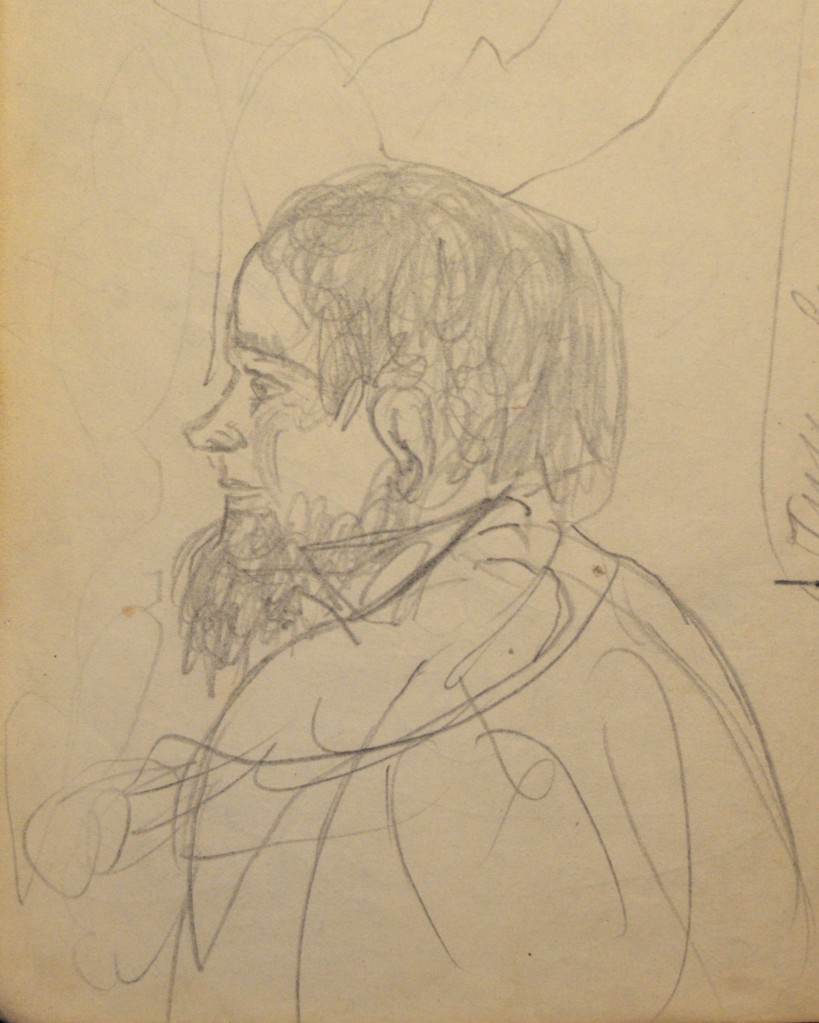
In 1860 T.H. provoked a public argument for and against evolution by openly defending Charles Darwin’s 1859 book, On the Origin of Species, against the academic and religious establishment’s strong rejection. He and Darwin became close friends, working together with three or four other scientists. He modernized education, working with the government to change the standard from just Latin and Greek to French and Spanish. There is a whole book by Cyril Bibby about his impact on modern education. was an advisor to continued to defend Darwin’s evolutionism in a series of lectures through the next decade. In July 1854, he became Professor of Natural History at the Royal School of Mines and naturalist to the British Geological Survey in the following year. In addition, he was Fullerian Professor at the Royal Institution 1855–58 and 1865–67; Hunterian Professor at the Royal College of Surgeons 1863–69; President of the British Association for the Advancement of Science1869–1870; President of the Quekett Microscopical Club 1878; President of the Royal Society 1883–85; Inspector of Fisheries 1881–85; and President of the Marine Biological Association 1884–1890.[11]He instituted a lecture series at the London School of Minds, scheduled for the working men and at a time that they could attend, to encourage men without a formal education to take an interest in modern science and feel they could contribute to man’s body of knowledge. T.H. cemented his scientific reputation with the publication of the evolutionist book, Evidence as to Man’s Place in Nature, and then with the zoological paper The Crayfish – considered by some to be a perfect work of scientific observation and argumentation.
After his intellectual debut in the 1860s, T.H. attained great respect and was elected to the London School Board, he was elected President of the Royal Society Imperial College of Science, and was a formative member of the Metaphysical Society, among other positions within the slowly redefining establishment. In all of these positions he advocated for scientific education at the expense of religious dogma. In the Metaphysical Society he famously coined the term “agnostic” in opposition to the church’s Gnostic claim on faithful knowledge, saying:
“Agnosticism is of the essence of science, whether ancient or modern. It simply means that a man shall not say he knows or believes that which he has no scientific grounds for professing to know or believe. Consequently, agnosticism puts aside not only the greater part of popular theology, but also the greater part of anti-theology. On the whole, the “bosh” of heterodoxy is more offensive to me than that of orthodoxy, because heterodoxy professes to be guided by reason and science, and orthodoxy does not.
https://en.wikipedia.org/wiki/Agnosticism
T.H. traveled to America, and helped open the Johns Hopkins University with an address in Baltimore. There is a crater on the moon named after him.
In their old age, T.H. and Henrietta enjoyed the natural beauty of their seaside home in Sussex, and mostly withdrew from the public clamor that had accompanied T.H.’s ground-breaking career. Hodeslea offered respite from London, where the pollution played havoc with T.H.’s lungs and heart, but he died of a heart attack on 29 June 1895. He was buried on 4 July 1895, next to his son Noel in St. Marylebone Cemetery, in Finchley, London.
Leonard Huxley and Rosalind Bruce
Our second great-grandfather Leonard Huxley (1860-1933) was born at the apex of England’s Victorian era, and gained from its slow liberalization and new attention to rationalism. At age 10 he was enrolled at University College School, London, then at St. Andrews University, and finally at Balliol College, Oxford.
Leonard enjoyed a schoolmaster career at Charterhouse in Surrey from 1884 to 1901, living at a house called Laleham (the house was destroyed in 1973, according to a biography). The school boasts a 400-year history of educating England’s elite, and its curriculum is well established in Protestant educational principles. While his father’s rejection of religion was well advertised throughout England, Leonard seemed to have no trouble at the school.
In 1885, Leonard married Julia Arnold (1862-1908), daughter of Tom Arnold. She was a sister of the novelist Mrs. Humphry Ward, niece of the poet Matthew Arnold, and granddaughter of Thomas Arnold, the headmaster of Rugby School. In her youth she and her sister Ethel inspired Lewis Carroll to invent the game of “word ladders,” according to family history. Oxford-educated, Julia founded a girls’ school called Prior’s Field, which was very successful and survives today.
Leonard and Julia had the following children together:
- Margaret Arnold Huxley, (1899-199?)
- Sir Julian Sorell Huxley, 1887-1975. Julian became the first Director-General of UNESCO. He was Secretary of the Zoological Society, Director of the London Zoo, co-founder of the World Wildlife Fund, and president of the British Eugenics Society. He presided over the founding conference for the International Humanist and Ethical Union. He wrote fifty books, including “The Science of Life.” His master-work Evolution: The Modern Synthesis gave the name to a mid-century movement which united biological theory and overcame problems caused by over-specialization. Julian married Juliette Baillot in 1919. They had two children, and both became scientists: Anthony Julian Huxley, a botanist and horticulturalist, and Francis Huxley, an anthropologist.
- Noel Trevenen Huxley, 1889-1914 (committed suicide.)
- Aldous Leonard Huxley, 1894-1963. Aldous was a novelist and philosopher focusing on dystopia. His main works include Crome Yellow (1921), Antic Hay (1923), Brave New World (1932), Eyeless in Gaza (1936) and Island (1960). Huxley also wrote many essays, including The Doors of Perception. Aldous married twice, to Maria Nys (1919), and after her death, to Laura Archera (1956). His only child, Matthew Huxley (1920-2005) was also an author.
In 1900, Leonard Huxley launched a successful career as a biographer. His first biography, three volumes of Life and Letters of Thomas Henry Huxley, received critical acclaim. In 1901 he became the assistant editor of Cornhill Magazine and became its editor in 1916.
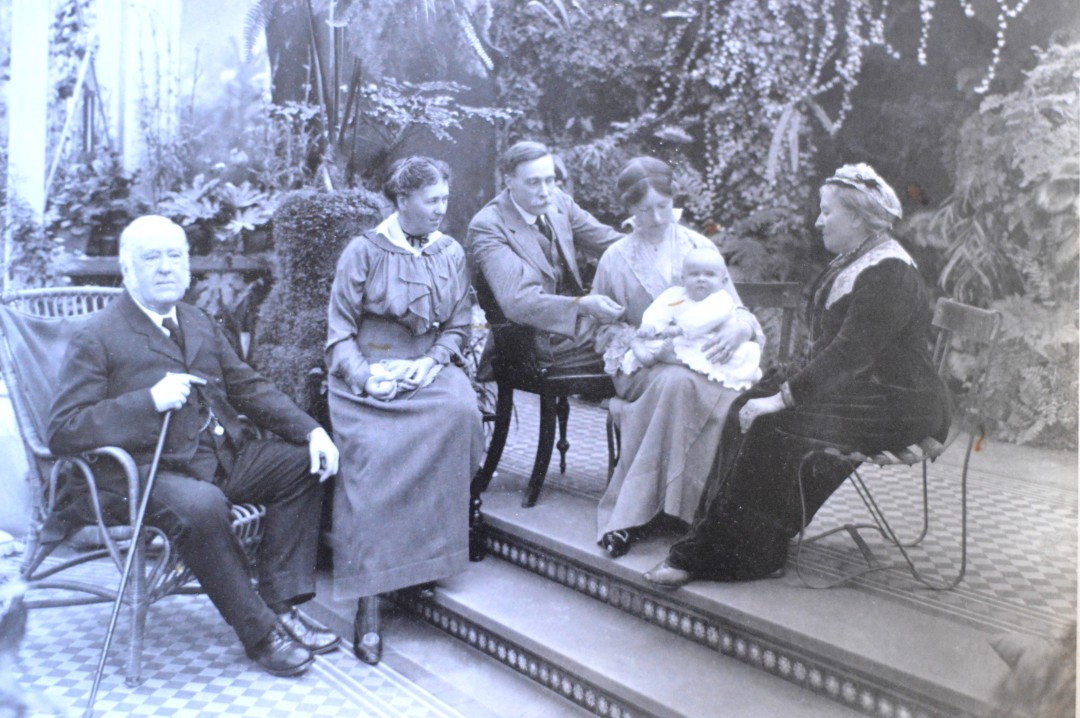
After the death of Julia Arnold due to cancer in 1908, Leonard moved to Bayswater, London. In 1912 he married Rosalind Bruce, daughter of William Wallace Bruce, who claimed ancestry to Robert Bruce. They had two children together:
- David Bruce Huxley, 1915-1992; married Anne Remsen Schenck (1918-1993) in June 1939. David and Anne are our direct ancestors.
- Andrew Fielding Huxley, 1917-2012. Andrew was awarded the Nobel Prize in Physiology or Medicine for studies of the central nervous system. He was knighted in 1974 and appointed to the Order of Merit in 1983. He was the second Huxley to be President of the Royal Society, and enjoyed having held the same position as his grandfather. He was also Master of Trinity College, Cambridge. In 1947 he married Jocelyn Richenda Gammell Pease (1925–2003), the daughter of the geneticist Michael Pease. They had one son and five daughters: Janet Rachel Huxley (born 1948); Stewart Leonard Huxley (born 1949); Camilla Rosalind Huxley (born 1952); Eleanor Bruce Huxley (born 1959); Henrietta Catherine Huxley (born 1960); Clare Marjory Pease Huxley (born 1962).
Leonard continued to publish successful biographies and other books – notably his 1918 Life and Letters of Sir Joseph Dalton Hooker, his 1920 Charles Darwin biography, and his 1913 book on Scot’s last expedition. This last book – an examination of the merits of eugenics – has drawn much criticism.
Leonard Huxley died on 3 May 1933 in London and is buried at Compton Village Cemetery, Compton, Surrey – or with his mother, Aldous, Julian at priors school? David president of board of trustees .
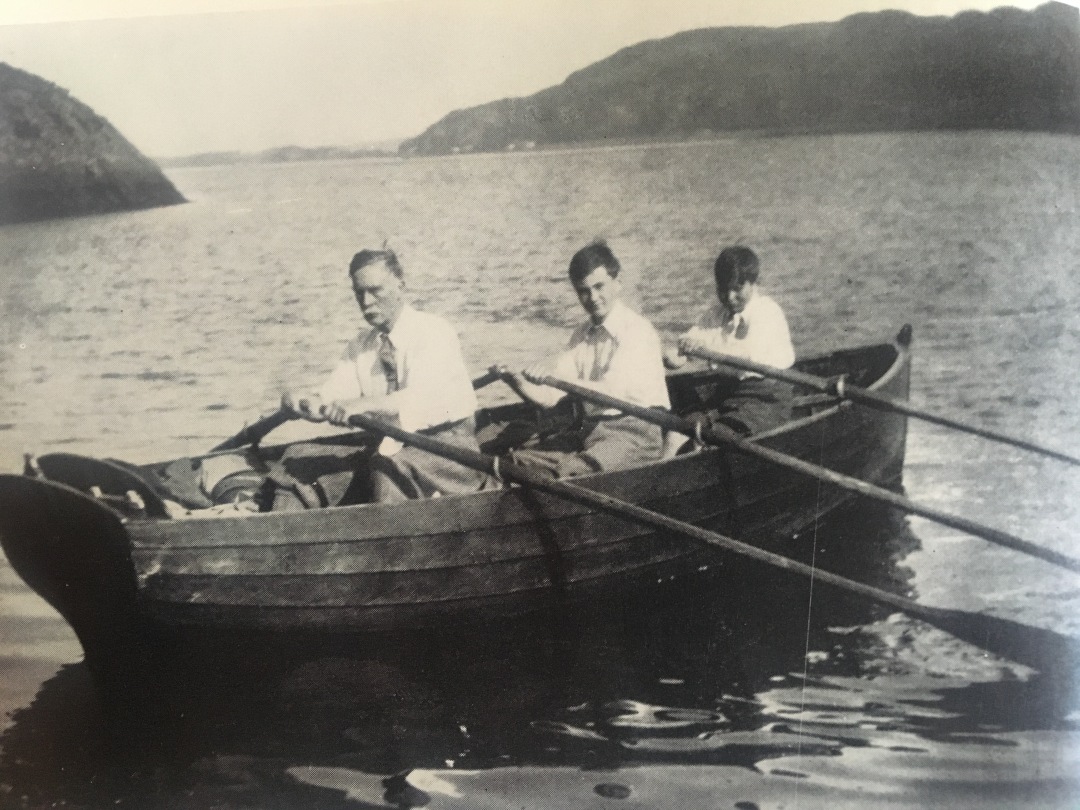
David Bruce Huxley and Anne Remsen Schenck
David Bruce Huxley (1915-1992) was our great grandfather. He was born to Leonard Huxley and Rosalind Bruce in London, 21 years after his half-brother Aldous Huxley was born. David loved his older half-siblings, but his much later birth meant some social separation from them. He was naturally closer to his younger brother Andrew, the Nobel Prize winner.
David was educated at Christ Church at Oxford University, but any plans for using his degree were put on hold due to the outbreak of World War II. Fortunately, he thrived in his military service. He began as a Second Lieutenant in the Royal Tank Regiment and went to North Africa, where he fought Rommel in the desert. According to his son, David “got blown to hell” and was sent to a hospital in Cairo, where he contracted dysentery.
At the end of his convalescence he was reassigned to Iraq for 3-4 years, where he put together a small defense force. He loved doing the spying, according to his son, but knew they’d fall apart if the Germans arrived. He played desert polo and hunted for foxes in his down time, and established a house of leisure for the troops. David left the Army as a Major.
After his return from the war, David gained posts in Bermuda as the solicitor general, attorney general and acting chief justice of the Supreme Court – for almost two decades. He made Bermuda attractive to US investors. He compiled and revised the “Private and Public Acts of the Legislature of Bermuda 1620-1953,” a seven-volume work. The 1953 West Indies and Caribbean Yearbook lists David as the Attorney General.
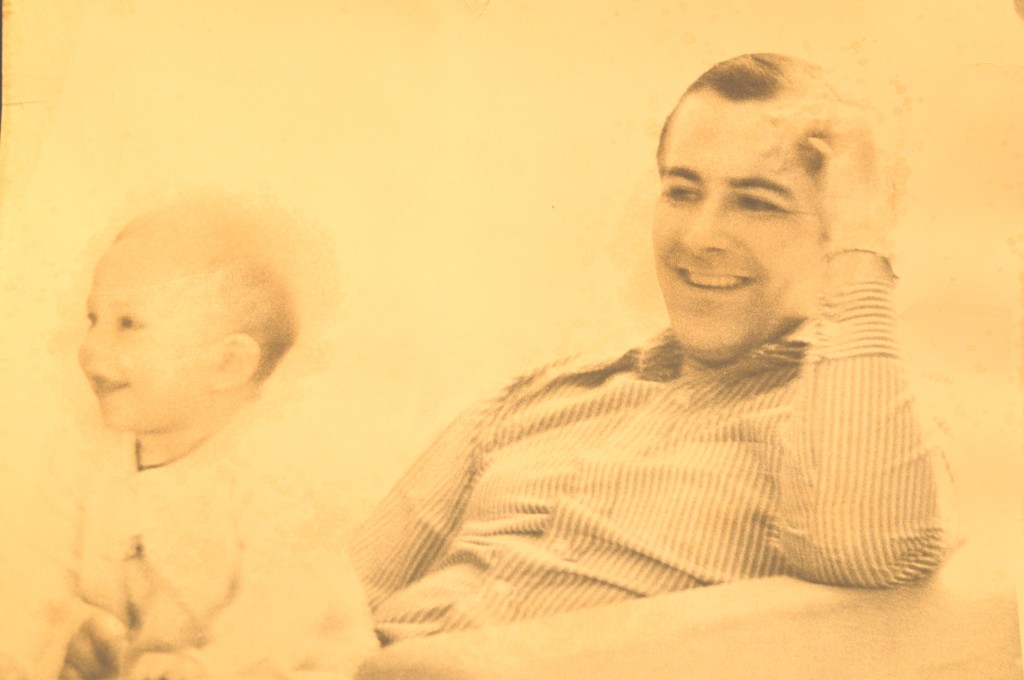
David married Anne Remsen Schenck (1918-1993) in the Spring of 1939 in Chelsea. Anne participated in the World War II effort as an ambulance driver in London, frequently witnessing Nazi air raids, and even being injured during one. She also contributed her services as a logistical organizer. Family legend also contends that she was a member of the OSS, befriending and spying on Nazi officers in the early years of the war.
Anne was the daughter of Frederic Schenck (1886-1919) and Marie Civilise Alexandre (1891-1967). Marie Civilise Alexandre was the granddaughter of the Civil War General Alexander Stewart Webb (1835-1911) through her mother Helen Lispenard Webb (1859-1929). Therefore, General Alexander Webb is our third great-grandfather through Anne. Our Webb family history sketch offers details.
David and Anne had the following children:
- Angela (Huxley) Darwin. Angela married George Pember Darwin in 1964. The marriage of a Huxley to a Darwin – a natural selection – attracted some media attention.
- Frederica Huxley of London
- Virginia Huxley of Columbia, Missouri
- Elizabeth Huxley of St. Louis, Missouri
- Michael Huxley of Albany, New York; married Carole Corcoran.
David took a position as a vice president and legal adviser to Arnold Bernhard and Company and the Value Line Fund in New York from 1957 to 1976. The marriage ended in divorce in 1961.
David then married Ouida Branch Wagner (1918-1998) in 1964. They retired to England in the late 1970s, where David took on the duties of warden of his local church. He loved the “bells and smells” of the church, according to his son.
David Bruce Huxley and Anne Remsen Schenck
David Bruce Huxley, Q.C. (1915-1992) and Anne Remsen Schenck (1918-1993) were our great grandparents. David was born to Leonard Huxley and Rosalind Bruce in London, 21 years after his half-brother Aldous Huxley was born. David loved his older half-siblings, but his much later birth meant some social separation from them. He was naturally closer to his younger brother Andrew, the Nobel Prize winner.
David was educated at Christ Church College at Oxford, and was proud of being the youngest Queen’s Counsel at the time. He also said he was the only QC to have spent a night in jail (for pinching a policeman’s helmet) He was at the Inns of Court when war broke out, then he joined the Court Regiment and thrived in his military service. He began as a Second Lieutenant in the Royal Tank Regiment and went to North Africa, where he fought Rommel in the desert. According to his son, David “got blown to hell”, developed vascular dysentery, and was sent to a hospital in Cairo.
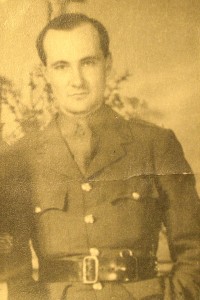
At the end of his convalescence he was reassigned to Iraq for 3-4 years, where he put together a small defense force. He loved doing the spying, according to his son, but knew they’d fall apart if the Germans arrived. He played desert polo and hunted for foxes in his down time, and established a house of leisure for the troops. David left the Army as a Major.
After his return from the war, David gained appointed posts in Bermuda as the solicitor general, attorney general and acting chief justice of the Supreme Court – for a total of almost two decades. He made Bermuda attractive to US investors. He compiled and revised the “Private and Public Acts of the Legislature of Bermuda 1620-1953,” a seven-volume work. The 1953 West Indies and Caribbean Yearbook lists David as the Attorney General.
David married Anne Remsen Schenck (1918-1993) in the Spring of 1939 in Chelsea. Anne was the daughter of Frederic Schenck (1886-1919) and Marie Civilise Alexandre (1891-1967).
Anne also took part in the war effort, possibly serving in the OSS in the early war according to family history, and then as a London ambulance driver and social aid organizer. She wrote her mother frequently during the war, describing constant Nazi air raids and the damage it inflicted on the community. She recounted being thrown by an explosion and injuring her nose. But she took most of it in stride, commenting in one letter that “war becomes me.”
David and Anne had the following children:
- Angela (Huxley) Darwin, 1940. Angela married George Pember Darwin in 1964. The marriage of a Huxley to a Darwin – a natural selection – attracted some media attention.
- Frederica Huxley, 1947 of London
- Virginia Huxley, 1952 of Columbia, Missouri
- Elizabeth Huxley, 1957? of St. Louis, Missouri
- Michael Huxley 1941of Albany, New York; married Carole Corcoran.
Under pressure from his wife to move to New York, David took a position as a vice president and legal adviser to Arnold Bernhard and Company and the Value Line Fund in New York from 1957 to 1976.
After his divorce from Anne, he married Ouida Branch Wagner (1918-1998) in 1964. They retired to England in the late 1970s, where David took on the duties of warden of his local church. He loved the “bells and smells” of the church, according to his son.
David died of heart failure on 6 September 1992 at their home in Wansford, England, according to a New York Times obituary.
David died of heart failure on 6 September 1992 at their home in Wansford, England, according to a New York Times obituary.
